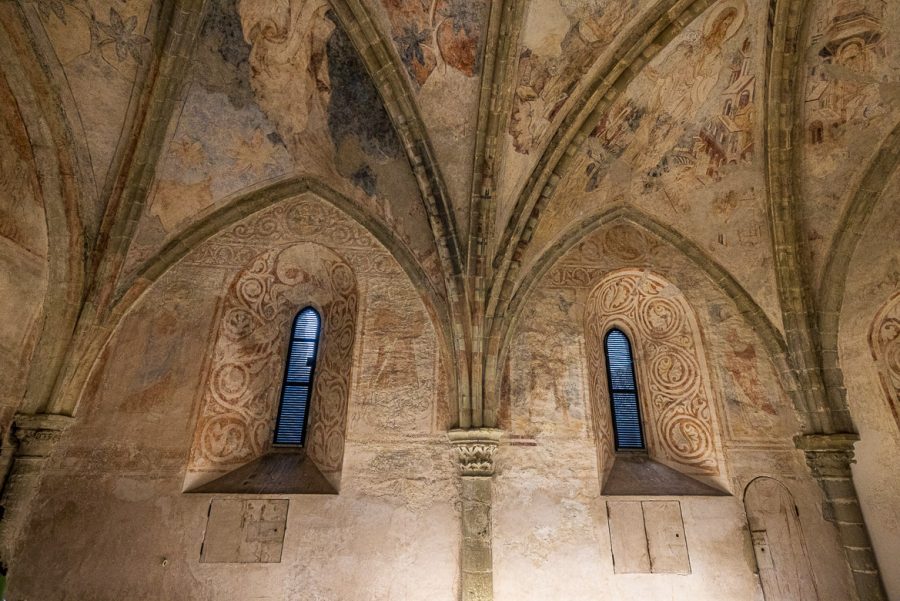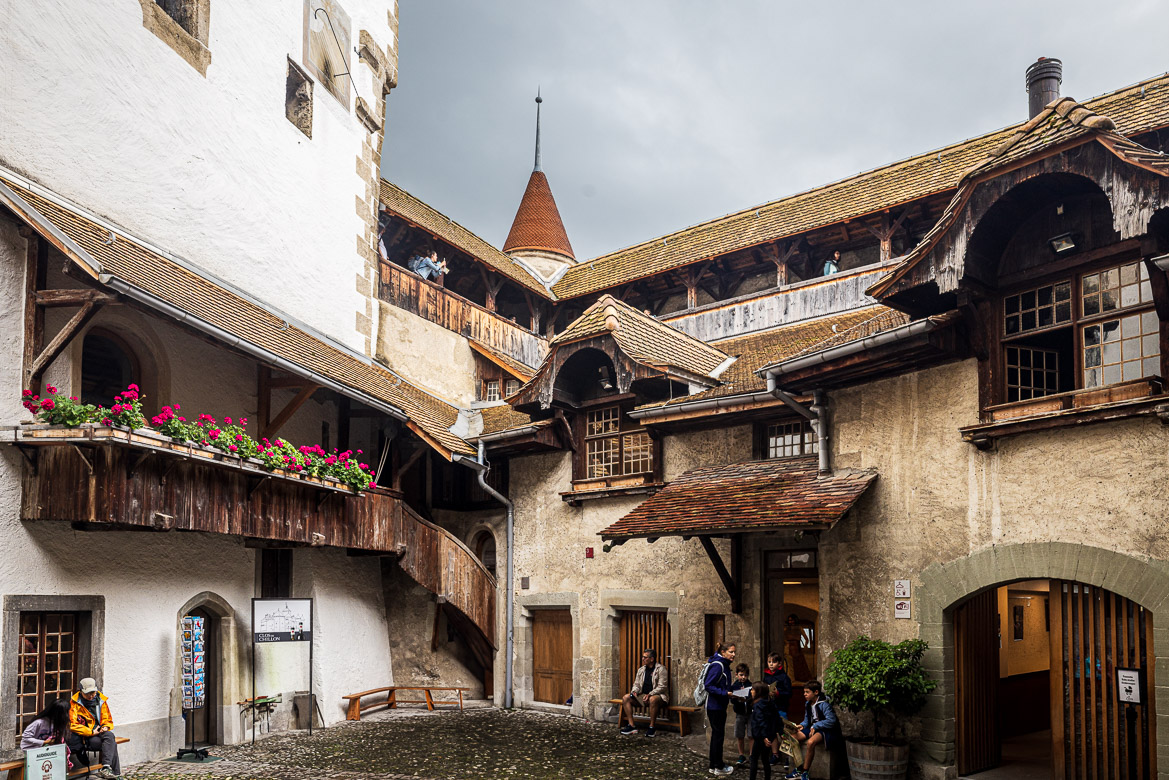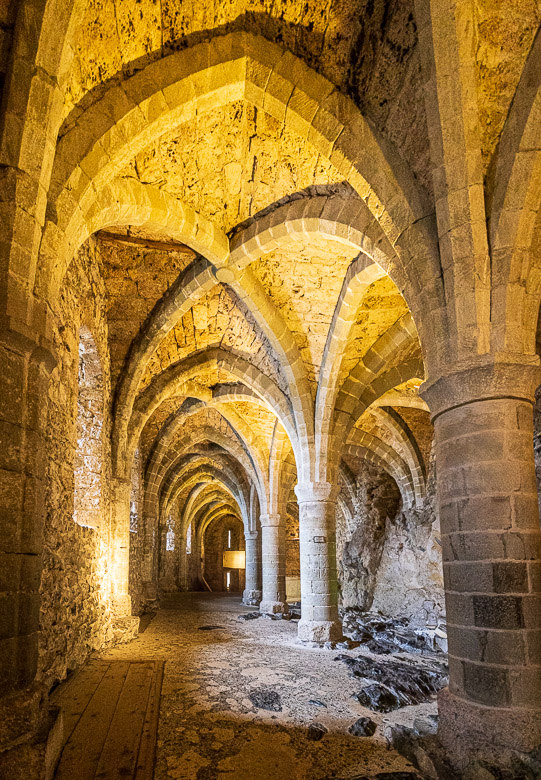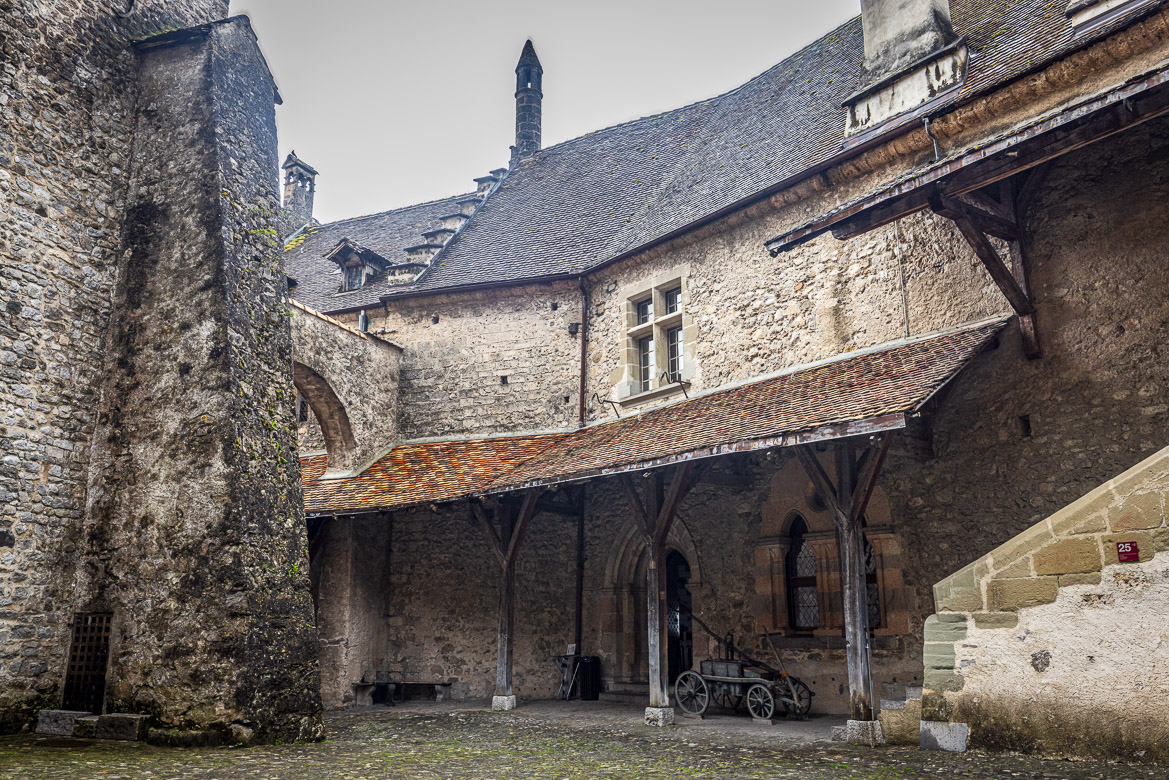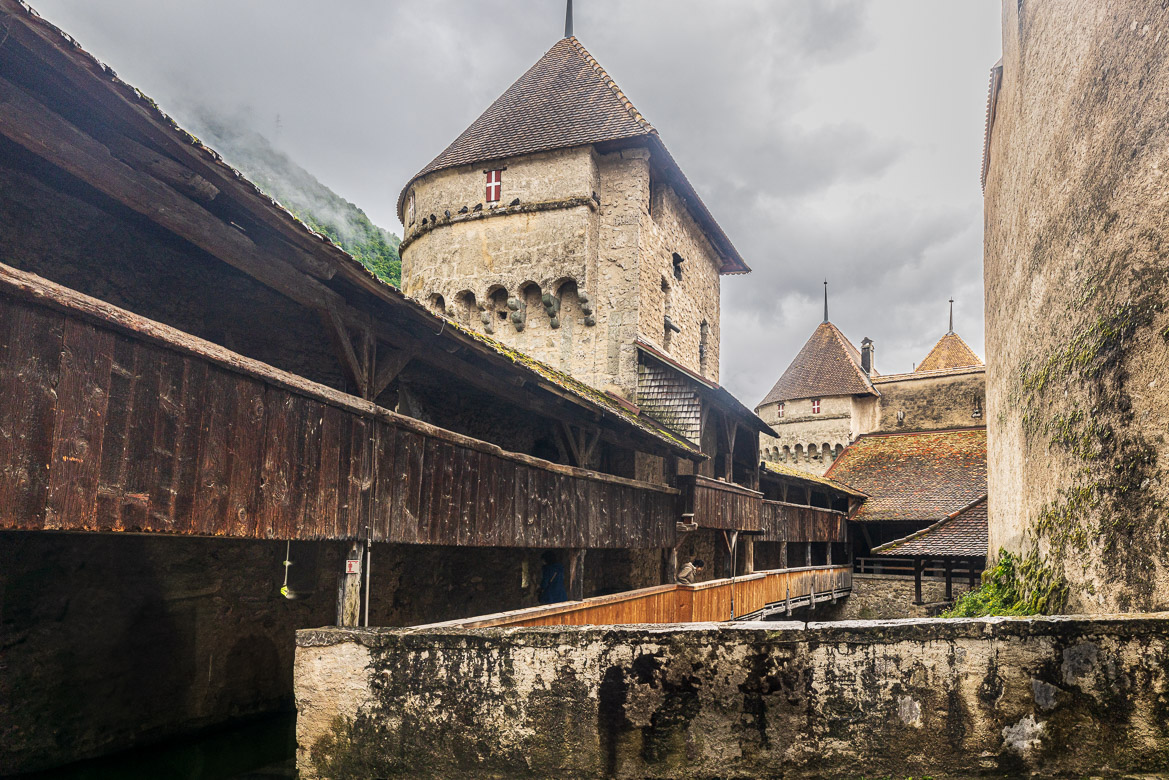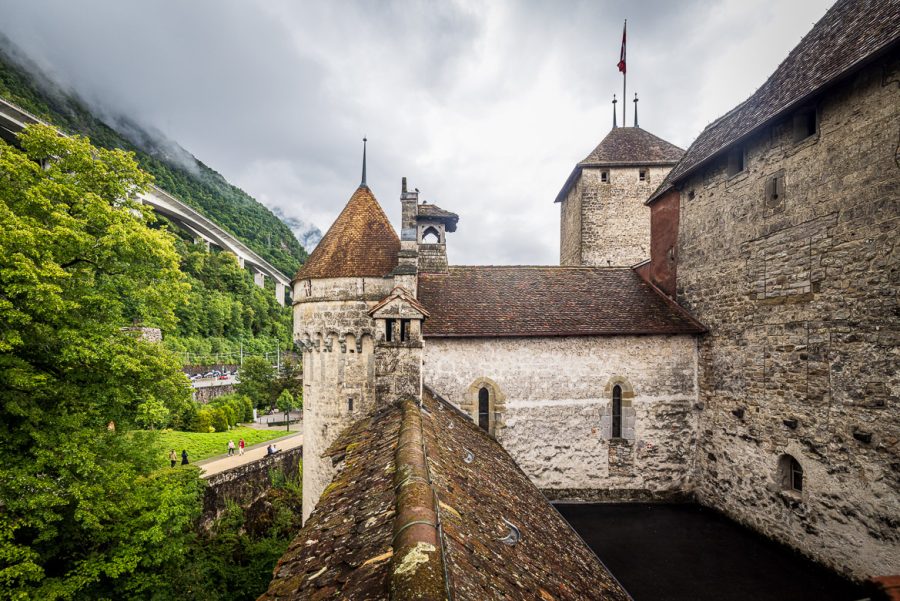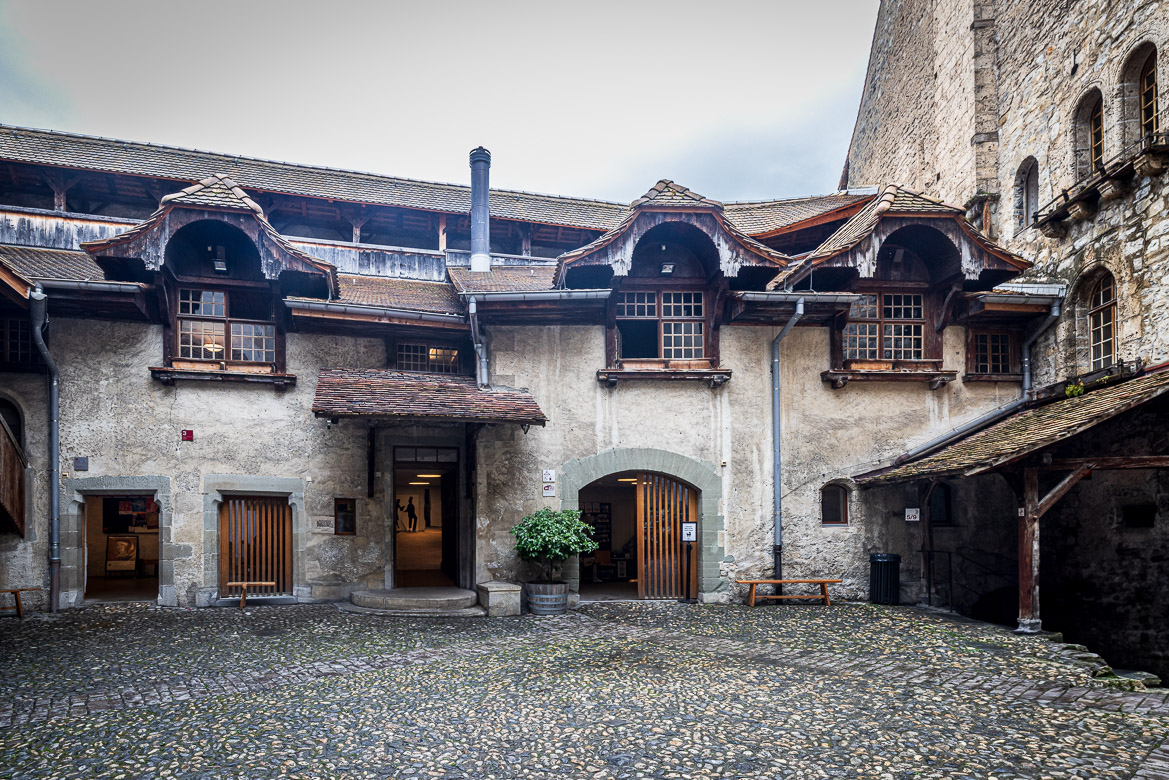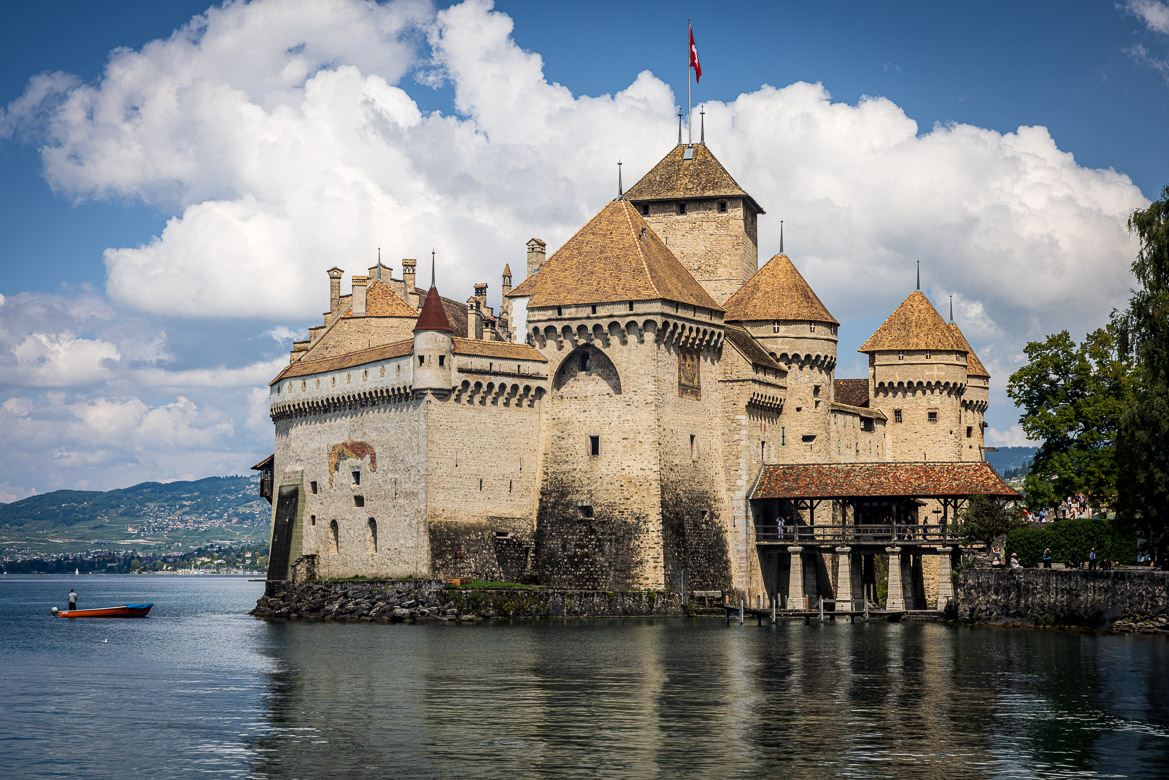
The castle of Chillon is built on the small island of Chillon, an oval limestone rock that shoots out into Lac Léman, Lake Geneva, on its east side near Montreux. It began as a Roman outpost, guarding the strategic road through the Alpine passes from Germany and France via the Rhône Valley to Italy (see my post about Grand St Bernard and Aosta).
The first construction of the castle itself dates back to the 10th or 11th centuries. Of the present construction the keep (the tall square tower) and the chapel are the oldest parts and date from late 11th C. The Counts of Savoy built the original castle and controlled it until 1536. At medieval time the passage from the northern countries to Italy was still in much use and apart from its important military position it was also an important source of income, as custom duties could be charged from merchants and travellers. A method that Trump will recognise today.
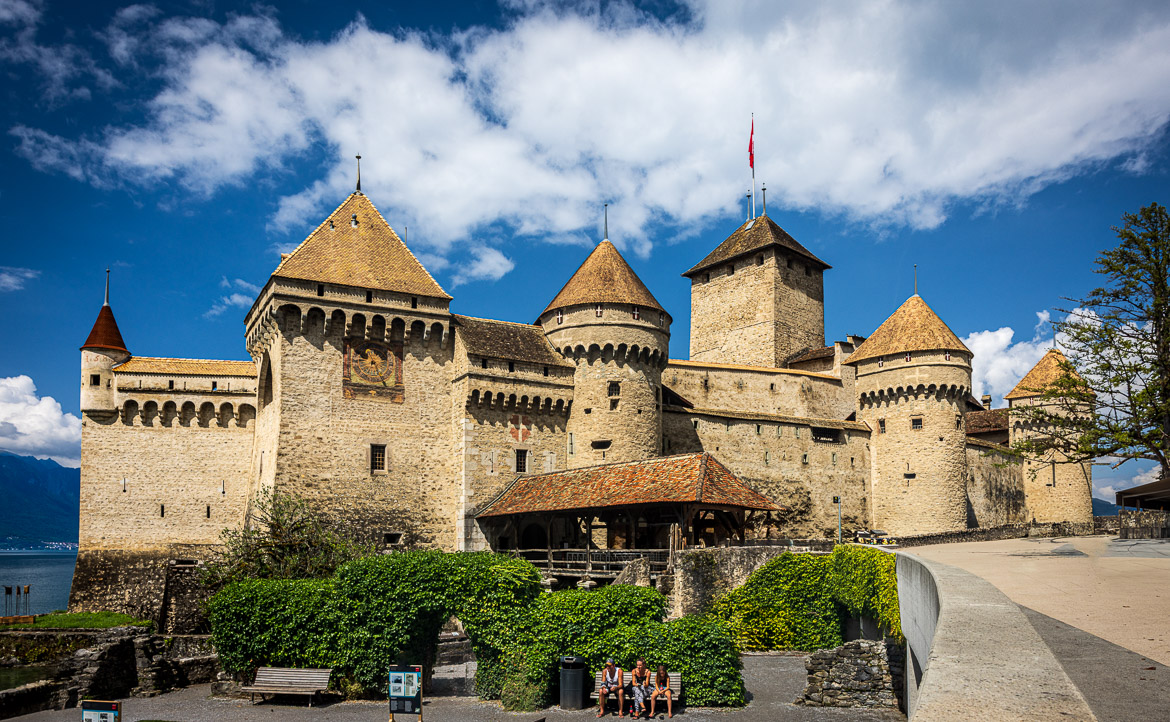
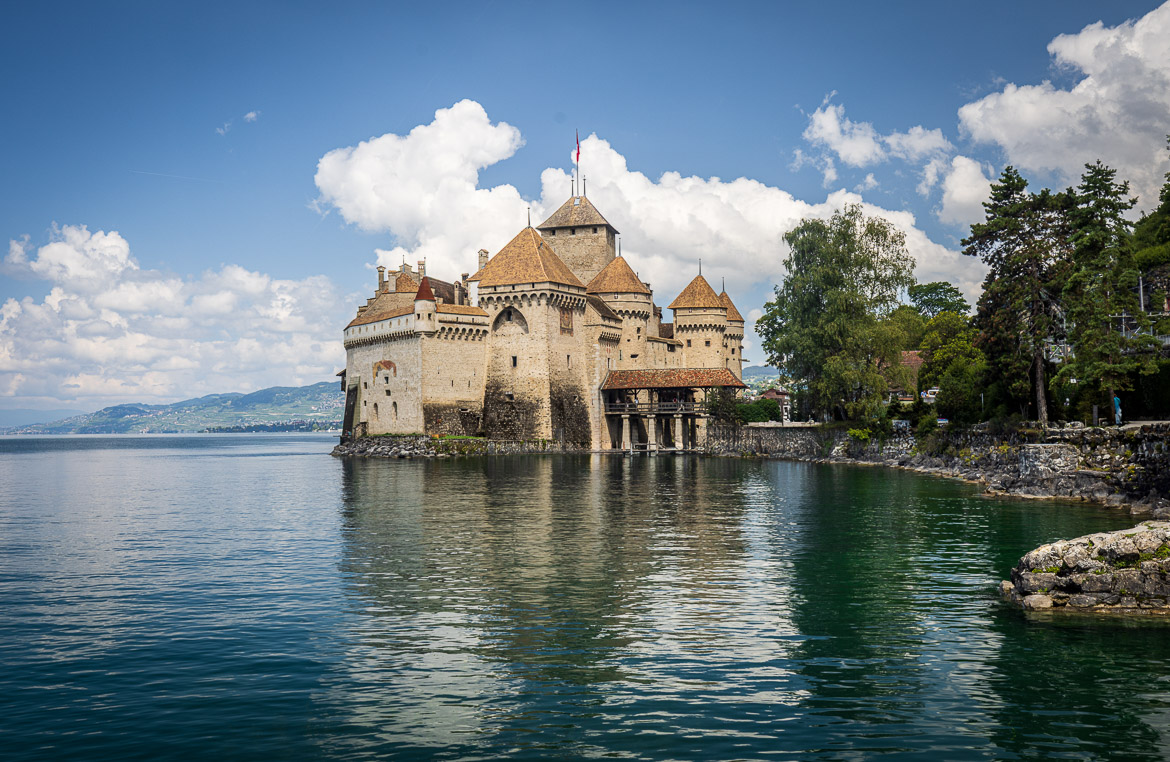
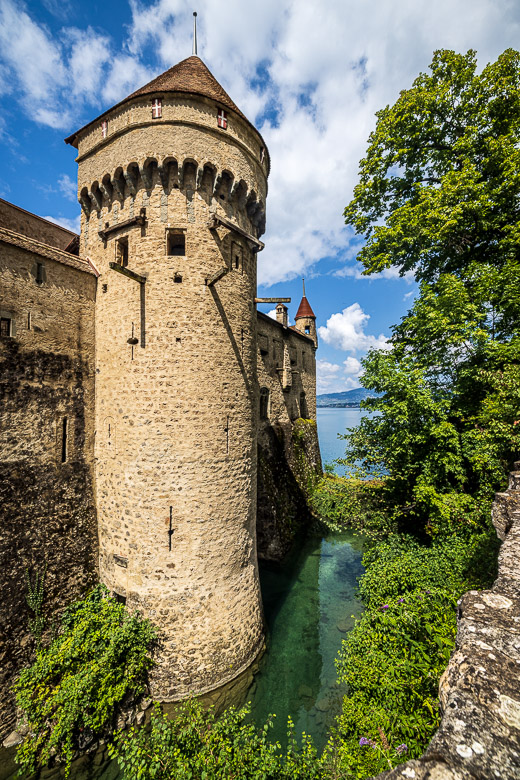
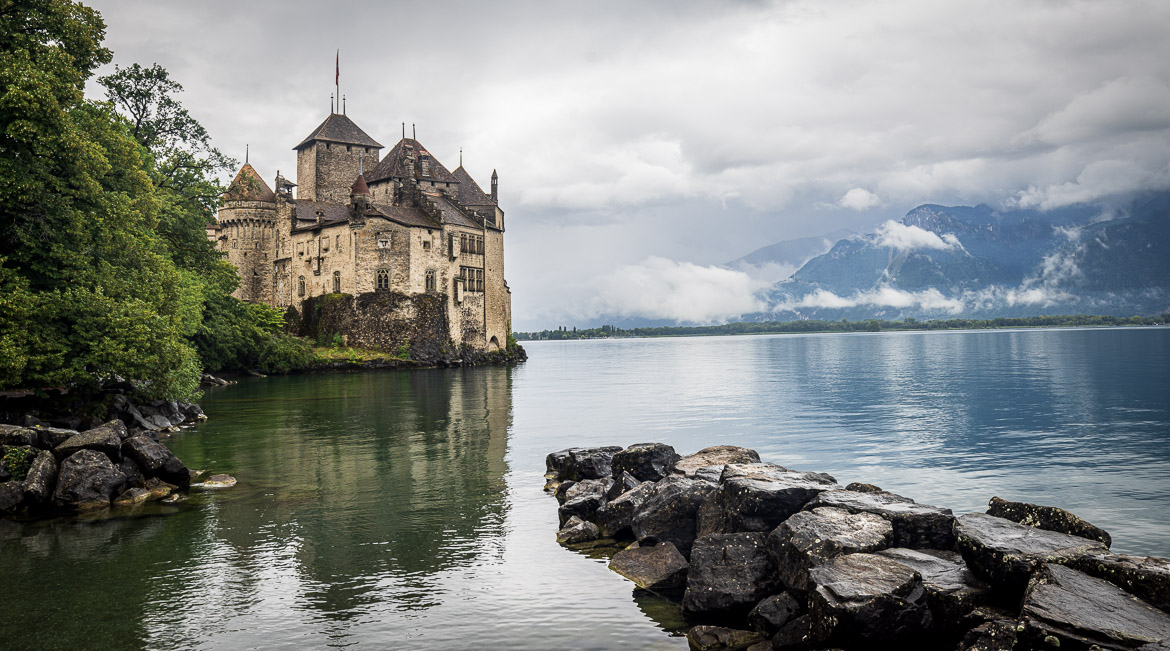
The Savoy dynasty expanded the land they controlled until at their heydays they ruled over around two thirds of present French-speaking parts of Switzerland. But Château de Chillon was gradually cast aside by the Savoy court in favour of other castles. Amadeus VIII, Duke of Savoy from 1416 to 1440, is famous for his piece-making and diplomatic talents. He tried to revive the castle but got during his later reign busy with other activities.
During the Western Schism, a split between factions of the Roman Catholic Church, more than one pope was elected. The Council of Basel elopposed the authority of the established pope and declared Amadeus as the new pope, an antipope, in 1439. After a long period of hesitation, Amadeus accepted the election and took the name Felix V. Hi never go widespread recognition and he gave up his position as antipope in 1449. This ended the schism, which was always more political than theological.
In 1536 the Bernese overtook the Savoys as rulers of the Pays de Vaud and of Chillon. The constable in charge of the case and all the inhabitants fled by boat.
